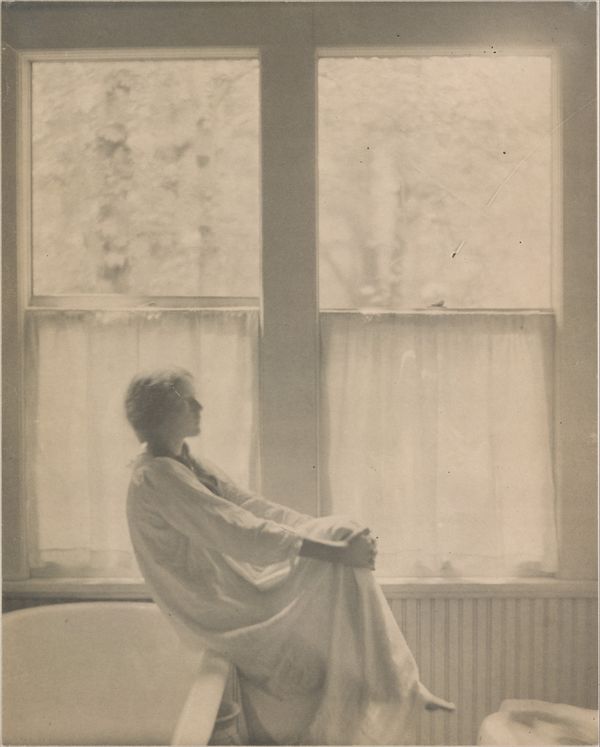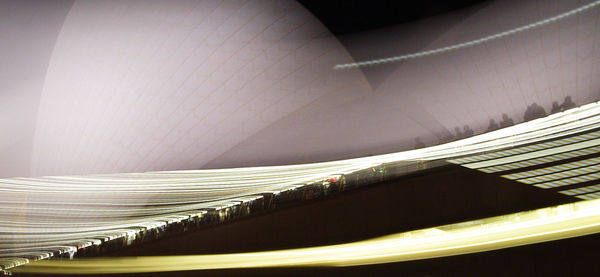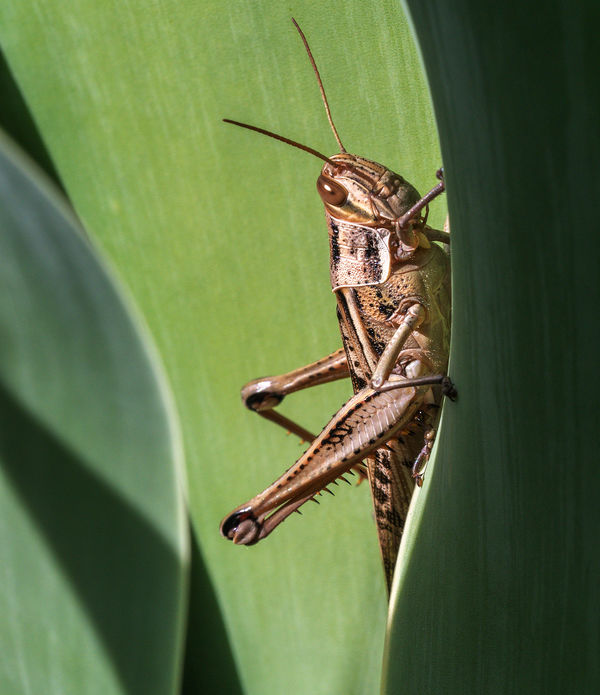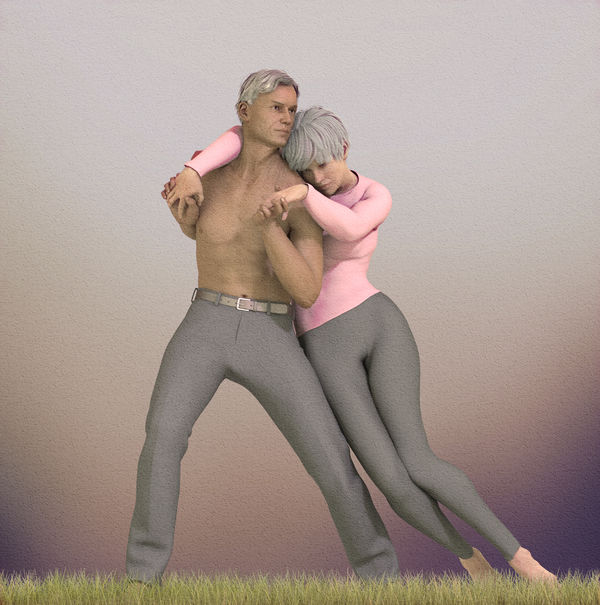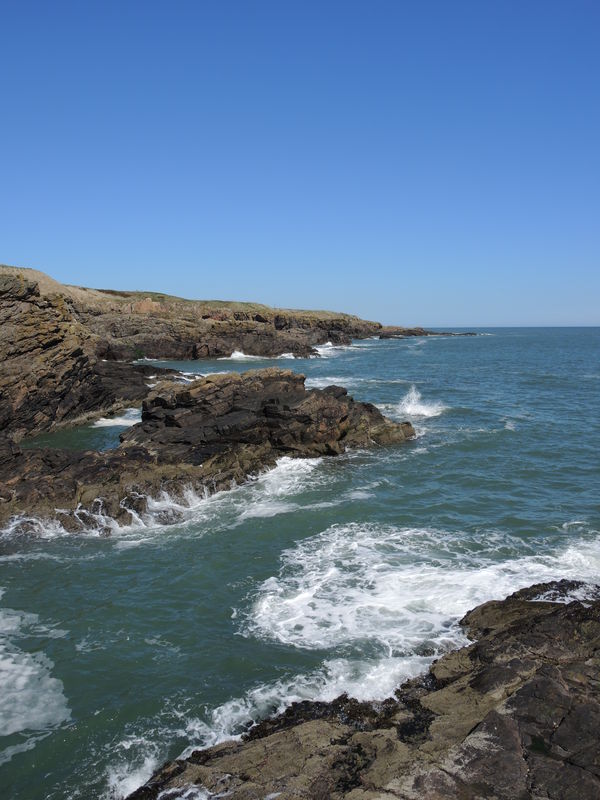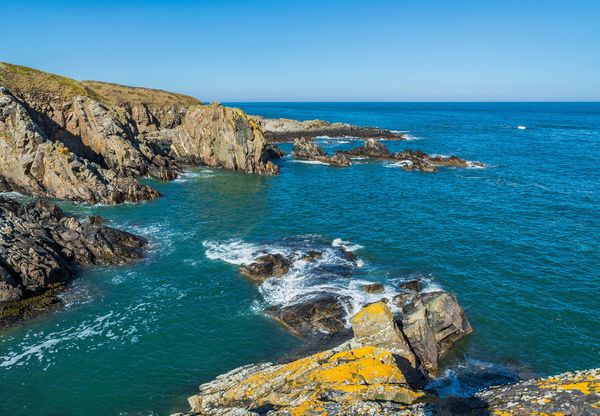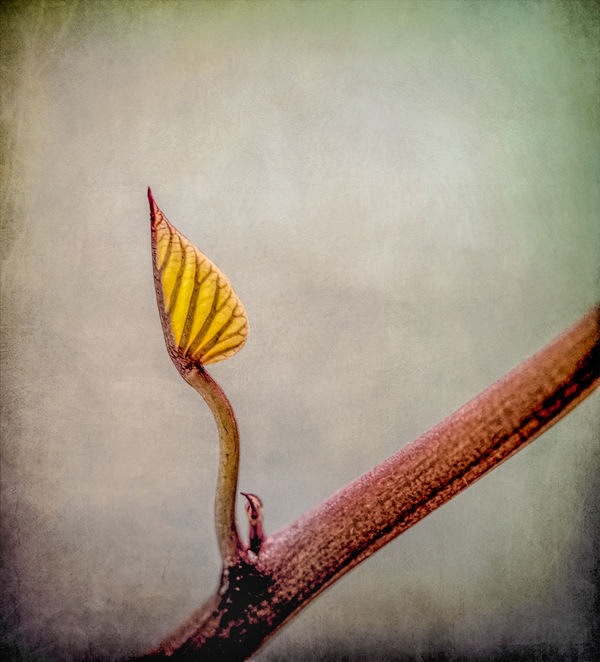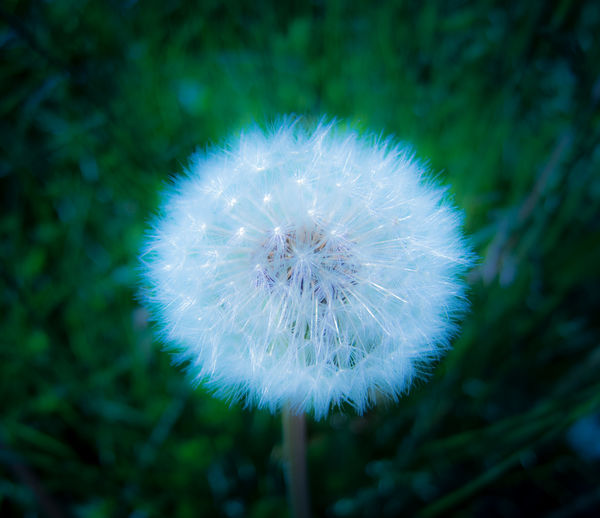Monthly Masters' Critique - May 2020 - Clarence White's "Morning" - Fine Art Photography At Home
May 1, 2020 09:59:06 #
Introduction
This month we will look at the image “Morning - the Bathroom” by Clarence H. White. A self-taught photographer from rural Ohio, White became famous for his delicate, idealized images of simple family life. His photographic career spanned from 1900-1925. He was a charter member of the Photo-Secession in 1902, a frequent contributor to Camera Work, and a member of Alfred Stieglitz’s inner circle. White taught photography at Columbia University Teachers College, the Brooklyn Institute of Arts and Science and the Seguinland School of Photography. He eventually founded the Clarence H. White School of Photography in New York, with the painter Max Weber, who infused the pedagogy with the design principles and formal painterly concerns from his recent experiences studying art in Paris.
White has been called the archetypal Pictorialist photographer in the US. He encouraged students to find their own creative vision, nurtured many talents, and his school provided them with fine technical training and a useful background in design and art theory. Supportive of the practical applications of artistic photography, in 1920 White joined his school to other institutions, to form The Art Center in New York. The influence of his school, in the meticulous attention to technique, formal design and print quality, was carried into the world through his many students, among them Anton Bruehl, Margaret Bourke-White,Dorothea Lange, Paul Outerbridge, and Ralph Steiner.
Questions To Consider
1. Pictorialism was a movement born of the argument that persists yet today: is photography an art or a science? Pictorialists contended that photographs could be works of art, and that certain techniques could move photography from a mere technical process to art works. Pictorialists favored art education for photographers, and application of principles of composition, light, and tone to evoke emotional responses to the image. Even on this forum there are differences of opinion about whether photography is art or not. What do YOU think? Is this photograph an art work? Why or why not? Are your photographs (or some of them) art works? Explain your thinking on this question.
2. What do you think of this image? Does the composition work? Does the main subject draw your attention? Is the image interesting? What do you think of the use of light? Do you like the image? Would you want it on your wall? Why or why not?
3. One of the techniques that many pictorialists employed was deliberate blur. Some felt that the use of blur enhanced the artistic nature of the images rather than simply having a perfect representation of the subject that was akin to “a scientific document”. What are your thoughts about this concept? Does the blur in this image add value or detract? Have you ever deliberately blurred an image for an effect? If so, we invite you to attach an image of your own that employs blur for artistic effect.
4. All of us are impacted in some ways by formal or informal restrictions on our movement and limited access to the shooting locations we are accustomed to visiting. This platinum print was made in the photographer’s home with no props or special lighting, using a family member as a model, in a time when photography was much more cumbersome than it is now. In fact, many of White’s best images were made in or around his home with humble scenes and subjects. How has being restricted in movement affected your photography? Have you found a way to make at-home photography interesting? Have you learned something new, in shooting or editing? Would you share something you’ve created during this time? And please also share how the limitations of this strange time have impacted your creativity, either positively or negatively, or both.
Links For Further Study
https://en.wikipedia.org/wiki/Clarence_Hudson_White
https://en.wikipedia.org/wiki/Pictorialism
https://iphf.org/inductees/clarence-h-white/
https://www.moma.org/interactives/objectphoto/schools/17.html
https://archive.artic.edu/stieglitz/clarence-h-white/
https://artmuseum.princeton.edu/story/clarence-h-white-and-his-world-art-and-craft-photography-1895%E2%80%931925
http://ndmagazine.net/photographer/clarence-hudson-white/
https://www.youtube.com/watch?v=SjOPQg0iIIs
This month we will look at the image “Morning - the Bathroom” by Clarence H. White. A self-taught photographer from rural Ohio, White became famous for his delicate, idealized images of simple family life. His photographic career spanned from 1900-1925. He was a charter member of the Photo-Secession in 1902, a frequent contributor to Camera Work, and a member of Alfred Stieglitz’s inner circle. White taught photography at Columbia University Teachers College, the Brooklyn Institute of Arts and Science and the Seguinland School of Photography. He eventually founded the Clarence H. White School of Photography in New York, with the painter Max Weber, who infused the pedagogy with the design principles and formal painterly concerns from his recent experiences studying art in Paris.
White has been called the archetypal Pictorialist photographer in the US. He encouraged students to find their own creative vision, nurtured many talents, and his school provided them with fine technical training and a useful background in design and art theory. Supportive of the practical applications of artistic photography, in 1920 White joined his school to other institutions, to form The Art Center in New York. The influence of his school, in the meticulous attention to technique, formal design and print quality, was carried into the world through his many students, among them Anton Bruehl, Margaret Bourke-White,Dorothea Lange, Paul Outerbridge, and Ralph Steiner.
Questions To Consider
1. Pictorialism was a movement born of the argument that persists yet today: is photography an art or a science? Pictorialists contended that photographs could be works of art, and that certain techniques could move photography from a mere technical process to art works. Pictorialists favored art education for photographers, and application of principles of composition, light, and tone to evoke emotional responses to the image. Even on this forum there are differences of opinion about whether photography is art or not. What do YOU think? Is this photograph an art work? Why or why not? Are your photographs (or some of them) art works? Explain your thinking on this question.
2. What do you think of this image? Does the composition work? Does the main subject draw your attention? Is the image interesting? What do you think of the use of light? Do you like the image? Would you want it on your wall? Why or why not?
3. One of the techniques that many pictorialists employed was deliberate blur. Some felt that the use of blur enhanced the artistic nature of the images rather than simply having a perfect representation of the subject that was akin to “a scientific document”. What are your thoughts about this concept? Does the blur in this image add value or detract? Have you ever deliberately blurred an image for an effect? If so, we invite you to attach an image of your own that employs blur for artistic effect.
4. All of us are impacted in some ways by formal or informal restrictions on our movement and limited access to the shooting locations we are accustomed to visiting. This platinum print was made in the photographer’s home with no props or special lighting, using a family member as a model, in a time when photography was much more cumbersome than it is now. In fact, many of White’s best images were made in or around his home with humble scenes and subjects. How has being restricted in movement affected your photography? Have you found a way to make at-home photography interesting? Have you learned something new, in shooting or editing? Would you share something you’ve created during this time? And please also share how the limitations of this strange time have impacted your creativity, either positively or negatively, or both.
Links For Further Study
https://en.wikipedia.org/wiki/Clarence_Hudson_White
https://en.wikipedia.org/wiki/Pictorialism
https://iphf.org/inductees/clarence-h-white/
https://www.moma.org/interactives/objectphoto/schools/17.html
https://archive.artic.edu/stieglitz/clarence-h-white/
https://artmuseum.princeton.edu/story/clarence-h-white-and-his-world-art-and-craft-photography-1895%E2%80%931925
http://ndmagazine.net/photographer/clarence-hudson-white/
https://www.youtube.com/watch?v=SjOPQg0iIIs
May 2, 2020 02:25:00 #
Thanks for introducing me to Clarence H. White and pictorialism.
"quote"
Questions To Consider
1. Pictorialism was a movement born of the argument that persists yet today: is photography an art or a science? Pictorialists contended that photographs could be works of art, and that certain techniques could move photography from a mere technical process to art works. Pictorialists favored art education for photographers, and application of principles of composition, light, and tone to evoke emotional responses to the image. Even on this forum there are differences of opinion about whether photography is art or not. What do YOU think? Is this photograph an art work? Why or why not? Are your photographs (or some of them) art works? Explain your thinking on this question.
I think photography can be art and definately science (technique). I do not think the photograph is "art", however I like it very much. Very few of my photographs are what I would consider art. The few that are (abstracts mostly) are the results of accidents or experiments (when I have a lot of time on my hands).
2. What do you think of this image? Does the composition work? Does the main subject draw your attention? Is the image interesting? What do you think of the use of light? Do you like the image? Would you want it on your wall? Why or why not?
It works for me and I love the light. I would not not have it on my wall as it is not something I am personally related to (mmeories).
3. One of the techniques that many pictorialists employed was deliberate blur. Some felt that the use of blur enhanced the artistic nature of the images rather than simply having a perfect representation of the subject that was akin to “a scientific document”. What are your thoughts about this concept? Does the blur in this image add value or detract? Have you ever deliberately blurred an image for an effect? If so, we invite you to attach an image of your own that employs blur for artistic effect.
I like the softness of this image.
Blur can be used for effect (motion) or to draw attention to a subject (dof control).
See example #1 (when I had a lot of time on my hands). Intentional camera movement.
4. All of us are impacted in some ways by formal or informal restrictions on our movement and limited access to the shooting locations we are accustomed to visiting. This platinum print was made in the photographer’s home with no props or special lighting, using a family member as a model, in a time when photography was much more cumbersome than it is now. In fact, many of White’s best images were made in or around his home with humble scenes and subjects. How has being restricted in movement affected your photography? Have you found a way to make at-home photography interesting? Have you learned something new, in shooting or editing? Would you share something you’ve created during this time? And please also share how the limitations of this strange time have impacted your creativity, either positively or negatively, or both.
From current family events, which I have not fully come to terms with yet (and is inhibiting my creativity), and with the restriction of movement my photography has slowly started up again with mostly images in the garden (example #2) although I have created (not photgraphs) a couple of images (example #3) that show how I am feeling. I do check out the sunsets every day.
.
"quote"
Questions To Consider
1. Pictorialism was a movement born of the argument that persists yet today: is photography an art or a science? Pictorialists contended that photographs could be works of art, and that certain techniques could move photography from a mere technical process to art works. Pictorialists favored art education for photographers, and application of principles of composition, light, and tone to evoke emotional responses to the image. Even on this forum there are differences of opinion about whether photography is art or not. What do YOU think? Is this photograph an art work? Why or why not? Are your photographs (or some of them) art works? Explain your thinking on this question.
I think photography can be art and definately science (technique). I do not think the photograph is "art", however I like it very much. Very few of my photographs are what I would consider art. The few that are (abstracts mostly) are the results of accidents or experiments (when I have a lot of time on my hands).
2. What do you think of this image? Does the composition work? Does the main subject draw your attention? Is the image interesting? What do you think of the use of light? Do you like the image? Would you want it on your wall? Why or why not?
It works for me and I love the light. I would not not have it on my wall as it is not something I am personally related to (mmeories).
3. One of the techniques that many pictorialists employed was deliberate blur. Some felt that the use of blur enhanced the artistic nature of the images rather than simply having a perfect representation of the subject that was akin to “a scientific document”. What are your thoughts about this concept? Does the blur in this image add value or detract? Have you ever deliberately blurred an image for an effect? If so, we invite you to attach an image of your own that employs blur for artistic effect.
I like the softness of this image.
Blur can be used for effect (motion) or to draw attention to a subject (dof control).
See example #1 (when I had a lot of time on my hands). Intentional camera movement.
4. All of us are impacted in some ways by formal or informal restrictions on our movement and limited access to the shooting locations we are accustomed to visiting. This platinum print was made in the photographer’s home with no props or special lighting, using a family member as a model, in a time when photography was much more cumbersome than it is now. In fact, many of White’s best images were made in or around his home with humble scenes and subjects. How has being restricted in movement affected your photography? Have you found a way to make at-home photography interesting? Have you learned something new, in shooting or editing? Would you share something you’ve created during this time? And please also share how the limitations of this strange time have impacted your creativity, either positively or negatively, or both.
From current family events, which I have not fully come to terms with yet (and is inhibiting my creativity), and with the restriction of movement my photography has slowly started up again with mostly images in the garden (example #2) although I have created (not photgraphs) a couple of images (example #3) that show how I am feeling. I do check out the sunsets every day.
.
May 2, 2020 02:29:04 #
May 2, 2020 10:47:30 #
RichardTaylor wrote:
Thanks for introducing me to Clarence H. White and... (show quote)
Thank you Richard for such a thoughtful reply, and for your images. Your own personal situation is so poignant during this difficult time, I’m amazed you have any mental energy left for creativity but apparently you’ve found how to channel your own challenges into creativity. Mad respect from me.
May 5, 2020 06:23:41 #
Visual perception is such a natural part of life that it's easy to take the whole process of visual perception for granted, or perhaps we could end up not being mindful of the rich possibilities that it presents us with. One of the purposes of art is to remind us that rewards and treasures can come to us through the channel of visual perception. In that context, visual perception isn't just the process of seeing - it becomes a multidimensional experience, and the possibilities are infinite.
Artists will tell us that appreciation is a key factor in unlocking those possibilities. For some, that appreciation can be dormant and in need of awakening. For others it is under-developed and in need of exercise. Another of the purposes of art is to stimulate and strengthen that appreciation - which is no small undertaking, especially considering the limited means that artists have at their disposal.
One of the options that an artist has is to attempt to convey what their own experience of visual perception can be like. If a work of art evokes a reaction in a viewer, the artist can see that as confirmation of success. Ideally the evoked reaction would be the same as that experienced by the artist, but most artists would be happy if it was roughly similar. Failing that, just about any reaction in the viewer is a success of sorts. Why? Because it's an example of the viewer having some sort of experience through the channel of visual perception.
The artist isn't limited to evoking reactions similar to their own. They can attempt to evoke any reaction of their choosing. Typically that would be a particular emotion or mood, but it can also include intellectual things like curiosity, and when that's the case, the storytelling aspects of an image can be relevant. Whether the intended reaction is emotional or intellectual, one factor that the artist will often want to incorporate is visual impact, and the ways of achieving that are well documented. Visual impact can serve to not only attract the viewer's attention but also to hold it.
Returning to the possibility of an artist trying to convey (or visually represent) their own perception experience, part of that will be trying to convey or evoke the feelings and/or thoughts that they experienced themselves. Put another way, the artist will try to convey or evoke (or symbolically represent) the inner processes that were part of their own perception experience. The focus is then on the world of inner processes, and one way to emphasise that shift in focus is to de-emphasise the outer world (the so-called "real" world). Some of the ways of achieving that de-emphasis can be seen in the works of the Impressionists, Surrealists and others.
The same de-emphasis can be seen in Pictorialism. However, the Pictorialists had very limited techniques at their disposal. Soft focus and low contrast would seem to be the main ones. It's possible that the lack of options led them to over-emphasise and over-use the few techniques they had. That is possibly one of the reasons why Pictorialism made such intermittent progress, and it's possibly what caused the narrow thinking that Alfred Stieglitz referred to as Pictorialism's "stupidity and sham". Hopefully the diverse possibilities given to us by digital image processing will lead to Pictorialism being given a new lease of life. Or are the objectives of Pictorialism now being achieved by other means (e.g. Graphic Art)?
Artists will tell us that appreciation is a key factor in unlocking those possibilities. For some, that appreciation can be dormant and in need of awakening. For others it is under-developed and in need of exercise. Another of the purposes of art is to stimulate and strengthen that appreciation - which is no small undertaking, especially considering the limited means that artists have at their disposal.
One of the options that an artist has is to attempt to convey what their own experience of visual perception can be like. If a work of art evokes a reaction in a viewer, the artist can see that as confirmation of success. Ideally the evoked reaction would be the same as that experienced by the artist, but most artists would be happy if it was roughly similar. Failing that, just about any reaction in the viewer is a success of sorts. Why? Because it's an example of the viewer having some sort of experience through the channel of visual perception.
The artist isn't limited to evoking reactions similar to their own. They can attempt to evoke any reaction of their choosing. Typically that would be a particular emotion or mood, but it can also include intellectual things like curiosity, and when that's the case, the storytelling aspects of an image can be relevant. Whether the intended reaction is emotional or intellectual, one factor that the artist will often want to incorporate is visual impact, and the ways of achieving that are well documented. Visual impact can serve to not only attract the viewer's attention but also to hold it.
Returning to the possibility of an artist trying to convey (or visually represent) their own perception experience, part of that will be trying to convey or evoke the feelings and/or thoughts that they experienced themselves. Put another way, the artist will try to convey or evoke (or symbolically represent) the inner processes that were part of their own perception experience. The focus is then on the world of inner processes, and one way to emphasise that shift in focus is to de-emphasise the outer world (the so-called "real" world). Some of the ways of achieving that de-emphasis can be seen in the works of the Impressionists, Surrealists and others.
The same de-emphasis can be seen in Pictorialism. However, the Pictorialists had very limited techniques at their disposal. Soft focus and low contrast would seem to be the main ones. It's possible that the lack of options led them to over-emphasise and over-use the few techniques they had. That is possibly one of the reasons why Pictorialism made such intermittent progress, and it's possibly what caused the narrow thinking that Alfred Stieglitz referred to as Pictorialism's "stupidity and sham". Hopefully the diverse possibilities given to us by digital image processing will lead to Pictorialism being given a new lease of life. Or are the objectives of Pictorialism now being achieved by other means (e.g. Graphic Art)?
May 6, 2020 05:17:33 #
minniev wrote:
......How has being restricted in movement affected your photography?....
Your choice of Clarence White as a subject is very timely. I was deprived of a much anticipated holiday right at the start of the lockdown. My intention was to look for photo-ops on the west coast of Scotland, something I enjoy immensely. Thanks to the restrictions I am now reduced to re-visiting old haunts closer to home. One of those haunts is the coast just south of Aberdeen, UK.
I now have the opportunity to compare new shots to old, and it's interesting to see how my techniques have changed. One thing I do now is put more emphasis on foregrounds. I wasn't blind to the benefits of a good foreground in the past but it's become something I look for more purposefully. IMO one of the best types of foreground is one that encourages the viewer's eye to move into the shot. I would say that's one of the improvements that #2 has compared to #1.
.
May 6, 2020 09:14:50 #
Thank you RG for sharing a fascinating discussion of visual perception and your own "homebound" photography. The puzzle of what the artist is trying to convey has always interested me. I agree with your premise that the artist may have a preconceived perception or message that he/she intends to get across to the viewer. But in my own work, I fall into that other category you mention, and tend to prefer artworks that do the same: I like ambiguity so I always hope people will find their own interpretation rather than just my own.
May 6, 2020 10:52:25 #
1. Looking back, I think I would have enjoyed exploring design classes when I took the year-long black and white film class in 1990 at a local community college (I was working full time). I absolutely accept photography as art - and the photo doesn't need "playful pp" to be that. Use of light and shadows + pov, composition - all the basic stuff done by skilled eye and hands proves (to me) that photography is much more than documentation.
2. I like the photo example for its softness and contemplative feel, even though her position on the narrow hard edge of tub suggests it can't be very comfortable I don't put other people's art on the walls of my tiny apartment.
I don't put other people's art on the walls of my tiny apartment.
3. The blur (what I called softness, I guess) of the posted pic makes it a very different story than a sharp image would present. I recently have explored the use of negative clarity in pp work. #1 below is one result. I can't recall other recent deliberately blurred images besides some in-camera motion, which is rather hit or miss. However, I do very much like softer looks, which is one reason I enjoy photographing in fog.
4. Limitations during covid "stay home/stay safe" - I am fortunate to be able to drive around the countryside and shoot from the car. #1 was done that way. #2 is from walking around my apartment complex where - again, how fortunate! - we have trees and a few flowers. #3 I set up and photographed on my balcony.
Because I'm so strongly drawn to light and shadow, especially backlighting, as long as the sun is out, I have interesting-to-me photo ops nearby. I also love to play with processing!
Thanks, as always, for your time and thought-provoking series, Minnie!

1 P4210043-3, on Flickr
.

1 P4060042, on Flickr
.

vase and onion flowers, on Flickr
2. I like the photo example for its softness and contemplative feel, even though her position on the narrow hard edge of tub suggests it can't be very comfortable
 I don't put other people's art on the walls of my tiny apartment.
I don't put other people's art on the walls of my tiny apartment. 3. The blur (what I called softness, I guess) of the posted pic makes it a very different story than a sharp image would present. I recently have explored the use of negative clarity in pp work. #1 below is one result. I can't recall other recent deliberately blurred images besides some in-camera motion, which is rather hit or miss. However, I do very much like softer looks, which is one reason I enjoy photographing in fog.
4. Limitations during covid "stay home/stay safe" - I am fortunate to be able to drive around the countryside and shoot from the car. #1 was done that way. #2 is from walking around my apartment complex where - again, how fortunate! - we have trees and a few flowers. #3 I set up and photographed on my balcony.
Because I'm so strongly drawn to light and shadow, especially backlighting, as long as the sun is out, I have interesting-to-me photo ops nearby. I also love to play with processing!
Thanks, as always, for your time and thought-provoking series, Minnie!

1 P4210043-3, on Flickr
.

1 P4060042, on Flickr
.

vase and onion flowers, on Flickr
May 6, 2020 11:45:00 #
Linda From Maine wrote:
1. Looking back, I think I would have enjoyed expl... (show quote)
Thanks for your thoughtful response. I agree with your assessment about photography as art. While it can be documentation, it can be any number of other things as well. Paint, likewise, can be a protective coating for my fence, or it can be the delicate strokes on one of my aunt’s canvases. Tools can be used for more than one thing, and cameras/darkrooms (physical or digital) are tools too.
Thanks for these wonderful “safe at home” images that prove it’s possible to enjoy outdoor photography during the pandemic. Beautiful art!
May 7, 2020 17:37:30 #
I confess I have always been partial to this photograph, and used it in one of my early composites, placing the young lady into the dam structure with my birds. https://www.uglyhedgehog.com/t-446234-1.html
I also confess to a liberal interpretation of what "art" means. Since the confinement of our lock down, I've vacillated between despair, frustration, creative block, and an occasional effort to make something out of nothing. This is an artistic effort to make something out of nothing: a sweet potato fell between my washer and dryer, and began to sprout before I found it. So I took pictures of this thing and made a half dozen different creations out of the photos.
I also confess to a liberal interpretation of what "art" means. Since the confinement of our lock down, I've vacillated between despair, frustration, creative block, and an occasional effort to make something out of nothing. This is an artistic effort to make something out of nothing: a sweet potato fell between my washer and dryer, and began to sprout before I found it. So I took pictures of this thing and made a half dozen different creations out of the photos.
May 7, 2020 18:03:49 #
minniev wrote:
How delightful to look back and find the lady at your dam I confess I have always been partial to this photo... (show quote)

I have always loved the thought of "harvesting pixels" since you first mentioned. A surprise discovery in your laundry room has given you play time and a charming result posted here.
All the best!
May 8, 2020 15:35:02 #
I like this: quite bold in its simplicity, repetition of line, analogous colors… perfect visual balance… reminds me of something… something at the edge… of something…
Well done...
Well done...
May 8, 2020 18:31:07 #
fuminous wrote:
I like this: quite bold in its simplicity, repetition of line, analogous colors… perfect visual balance… reminds me of something… something at the edge… of something…
Well done...
Well done...
Minnie, my apology for confusing the issue- my comment was directed at your sweet-tater sprout...
... and now, after examining the entire thread, and not just Minnie's image, more apologies are due- Sorry Linda for running off on tangent and missing the scope entirely!
May 8, 2020 19:19:16 #
fuminous wrote:
Minnie, my apology for confusing the issue- my comment was directed at your sweet-tater sprout...
... and now, after examining the entire thread, and not just Minnie's image, more apologies are due- Sorry Linda for running off on tangent and missing the scope entirely!
... and now, after examining the entire thread, and not just Minnie's image, more apologies are due- Sorry Linda for running off on tangent and missing the scope entirely!
I’m glad you liked the tater! No apologies needed for me, always glad to have you in the mix! No strict constructionists here.
May 9, 2020 09:07:04 #
The Pictorialists were like the Impressionists in that they departed from traditionalist thinking by seeking to de-emphasise line, contour and detail. Presumably it was left to the artists to decide how otherworldly they wanted to be, because otherworldliness wasn't a prerequisite for being either a Pictorialist or an Impressionist. However, I would say that the goal of portraying an inner essence was a significant aspect of both disciplines, even if some of the practitioners didn't specify that as one of their objectives.
The following image is probably the closest I've come to deliberately de-emphasising line and contour. It's an attempt to portray the subject's softness as opposed to portraying the details of its structure.
.
The following image is probably the closest I've come to deliberately de-emphasising line and contour. It's an attempt to portray the subject's softness as opposed to portraying the details of its structure.
.
If you want to reply, then register here. Registration is free and your account is created instantly, so you can post right away.

